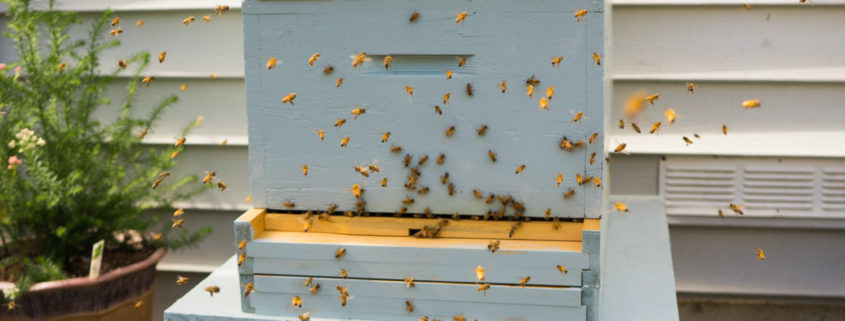What Happens When a Queen Bee Dies?
The queen bee is the heart of the hive and the life source of the colony. Without a queen bee, a colony cannot function.
A queen bee may meet her demise in various ways. Sometimes, death may come suddenly, perhaps from a beekeeping accident or an unexpected attack from other bees. Other times, a queen may live a long life and die of old age.
When a queen bee dies, the entire colony becomes aware of her absence within as little as four hours. The bees figure this out by the lack of the queen’s pheromone. In a healthy beehive with a queen, the bees constantly pass along a queen’s pheromone from one bee to another as the bees shuffle through the hive. This movement circulates the queen’s scent within the hive. The absence of this pheromone indicates to the rest of the hive that a queen is no longer present.
Once this realization takes place, the bees switch into emergency mode. The colony appears agitated, and the bees start buzzing loudly. This distinct buzzing is what some beekeepers call a queenless roar. This urgent realization of queenlessness triggers the raising of a new queen.
A healthy colony will attempt to replace a missing queen by initiating multiple queen cells. Producing a new queen begins when a few young larvae are chosen for special treatment and are fed a special diet of royal jelly throughout their development. It takes approximately 16 days after eggs are laid before any virgin queen bees hatch from these queen cells. Typically, the emerging virgin queens will fight each other, leaving only one alive to venture off to become mated and then mature to become a laying queen. This maturing process, which occurs after a successful mating, takes another 7 to 10 days.
This lengthy process requires the colony to continue without a queen. During this period, while the colony waits for the new queen to be established, it is especially vulnerable to becoming permanently queenless. If, for whatever reason, the colony’s virgin queen does not properly mate, or if the virgin queen gets killed somewhere along the way, the colony is sunk. The colony now has no more larvae to manufacture a new queen. Therefore, unless a beekeeper intervenes with a commercially raised queen, such as one purchased from Wildflower Meadows, the colony will eventually dwindle and die off.













